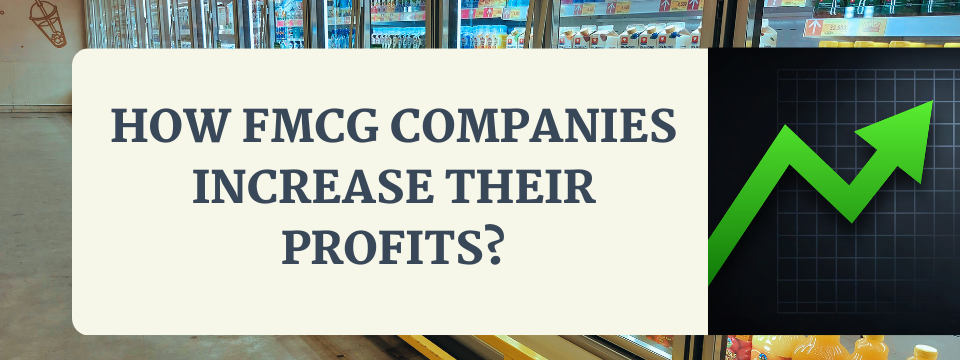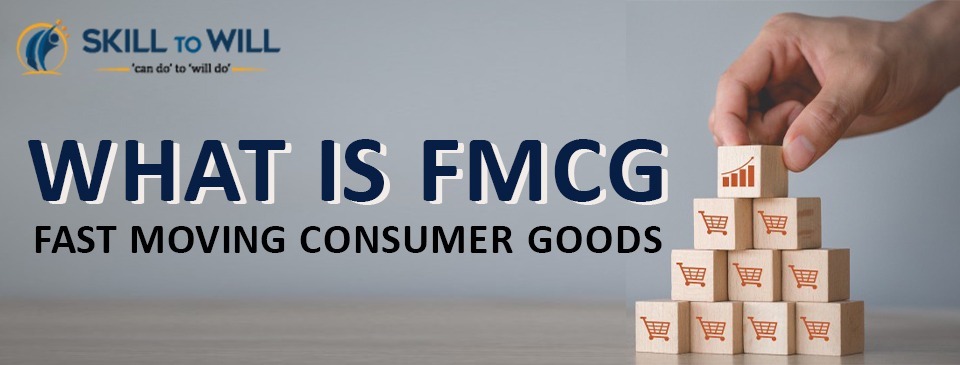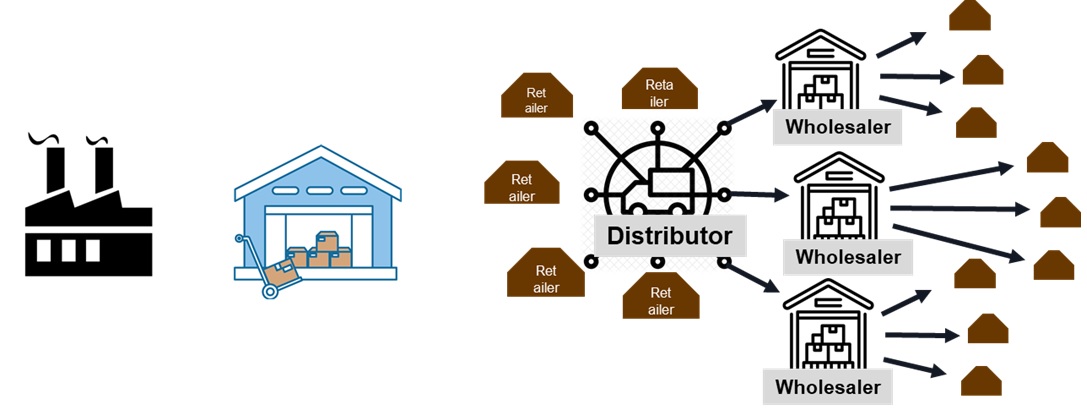How FMCG Organization Increase Their Profits?

FMCG DISTRIBUTOR MANAGEMENT
May 3, 2022
Mastering In-Store Visibility in the FMCG Industry
April 16, 2024Running a profitable business is the key to ensure that the business becomes sustainable. In this blog, I will share with the four ways in which FMCG organizations increase their profit margin.
- Premium product portfolio
- New markets
- Channels of distribution
- Cost-cutting
Let us discuss each one briefly.
1. Premium Product Portfolio:
If a FMCG Company is earning good profits, then it must have a premium product portfolio. HUL, Marico, Britannia, Nestle are some of the bigger organizations whose profit margins are on the higher side. HUL has premium brands like Dove and Pears in their skincare portfolio, and brands like Tresemme and Indulekha in their hair care portfolio. HUL’s premium portfolio grew over 2.5 times the mass segment in ‘23. Premium products are now a third of HUL’s sales. Marico has a premium edible oil brand – Saffola. Recently, Haldiram’s entered the premium chocolate market with their brand – Cocobay to compete with two big players who dominate the space – ITC and Mondelez.
You might be a small FMCG organization, medium or a big FMCG organization. If you want to increase your profit margin, then a part of your product portfolio has to be premium.
2. New Markets of FMCG:
Expanding in new markets helps in increasing sales and often it helps in increasing profits. This does not mean it will increase profit margin, but it surely helps. An example of this is Mondelez. Cadbury’s was an urban brand available mostly in cities and towns with proper infrastructure. For a product like chocolate, infrastructure is very important because it needs a Cold Chain or else it will melt. The entire supply chain has to be in temperature-controlled environment, right from the factory to the retailer’s shop. You must have spotted the attractive chocolate dispensers or counter tops on the cash counter of many outlets. They are also part of the Cold Chain. Mondelez spent huge amount in developing the Cold Chain to reach smaller villages. They penetrated the rural markets successfully increasing its presence and profits.
Expansion can also happen through exports. Many small and medium FMCG companies have successfully explored the export market and built profitable businesses.
3. Channels Of Distribution:
There are broadly two types of channels – online and offline.
In Online, there are many D2C brands, then there are platforms like Amazon and Flipkart. Online platforms save the trade margins, but there are platform margins and digital marketing cost. However, many small brands take the online route initially to sell their products at a lower cost and make higher profit margins. Even large established FMCG companies have set up their D2C website like – Love Planet and Beauty by HUL, last year Marico acquired a 58% stake in D2C nutrition band -Plix, ITC acquired stakes in Mother Sparsh and Yoga Bar. Biscuit manufacturer, Priya Gold also launched its D2C website at the end of ’23.
In offline, FMCG organizations modify their distribution model and GTM to reduce the distribution cost. For, example, they might decide to remove the Super-Stockist and go for a CFA model. Or they might consolidate distributors to exercise more control while scaling up.
4. Cost-Cutting
FMCG Companies also take cost-cutting measures to improve margins. For example, at times FMCG manufacturers are faced with the challenge of shrinking margins due to inflation and rise in input or commodity prices. To retain the minimum margin, sometimes FMCG organizations reduce the distributor and retailer margins. Or they might plan to set up a manufacturing facility near to the target markets, or digitize the supply chain to make it more efficient. They might also take measures to reduce the cost of running the organization. They might even optimize their spend on ads, like TV, ads, print, ad, etc. So, these are the 4 measures, usually, any FMCG companies take to increase their profit margin. Watch the video for more details.




